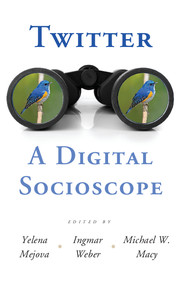The Cambridge Handbook of Behavioural Data Science
The Cambridge Handbook of Behavioural Data Science offers an essential exploration of how behavioural science and data science converge to study, predict, and explain human, algorithmic, and systemic behaviours. Bringing together scholars from psychology, economics, computer science, engineering, and philosophy, the Handbook presents interdisciplinary perspectives on emerging methods, ethical dilemmas, and real-world applications. Organised into modular parts-Human Behaviour, Algorithmic Behaviour, Systems and Culture, and Applications—it provides readers with a comprehensive, flexible map of the field. Covering topics from cognitive modelling to explainable AI, and from social network analysis to ethics of large language models, the Handbook reflects on both technical innovations and the societal impact of behavioural data, and reinforces concepts in online supplementary materials and videos. The book is an indispensable resource for researchers, students, practitioners, and policymakers who seek to engage critically and constructively with behavioural data in an increasingly digital and algorithmically mediated world.
- Makes behavioural data science tangible with real-world applications across domains such as health, education, finance, cybersecurity, and sustainability
- Equips readers to critically engage with ethical challenges including fairness, transparency, intersectionality, and societal impacts of data-driven behavioural analysis
- Offers videos, chapter appendices, and other supplementary resources on a companion website
Product details
April 2026Paperback
9781108940566
650 pages
254 × 178 mm
0.25kg
Not yet published - available from April 2026
Table of Contents
- The Cambridge handbook of behavioural data science
- Preface
- List of contributors
- Handbook abstract
- Introduction: how to read this book
- Part I. Introduction to Behavioural Data Science:
- 1. History of behavioural data science: successes and challenges
- 2. Overview of behavioural data science
- 3. Behavioural data science: framework and topology of methods
- Part II. Human Behaviour:
- 4. Behavioural data science for understanding human decisions, choices, and judgement
- 5. Psychological theories of decision making under risk
- 6. Prediction oriented behavioural research and its relationship to classical decision research
- 7. The ABCs of behavioural influence
- 8. Word and sentence embedding methods for studying human behaviour
- 9. Predictive Bayesian Modelling in cognitive sciences
- 10. Human aspects of AI-related risks: a behavioural data science approach
- Part III. Algorithmic Behaviour:
- 11. Generative AI and behavioural data science
- 12. How successful are existing algorithms in explaining and predicting human behaviour?
- 13. Emotion and Big Data: The Elephant in the Room?
- 14. Smart Bots? A Behavioural Approach to Measure The 'Intelligence' of Conversational AI Pre-Chat GPT
- 15. Chatgpt & CO – exploring conversational abilities of large language models from a behavioural perspective
- 16. Machine behaviour
- 17. Modelling choice behaviour using artificial intelligence
- 18. anthropomorphic learning: hybrid modelling approaches combining decision theory and machine learning
- Part IV. Systems and Culture:
- 19. Systems, culture, and human-machine teaming
- 20. Cognitive networks as models of cognition and behaviour: an introduction
- 21. Agent-based modelling in social networks
- 22. Modelling context-dependent behaviour
- 23. A short primer on historical natural language processing
- 24. Behavioural data in complex economic and business systems
- 25. Applications of statistical mechanics and cyber-physical systems to behaviour
- 26. Systems behaviour for sustainable AI
- 27. Systems behaviour and experimentation
- 28. Quantum mechanics of human perception, behaviour and decision-making: a do-it-yourself model kit for modelling optical illusions and opinion formation in social networks
- Part V. Applications:
- 29. Applications of behavioural data science
- 30. Pro-social nudging
- 31. Social media analytics
- 32. Quantifying luck
- 33. Quantifying the connection between scenic beauty and reported health using deep learning and econometrics
- 34. Money, methodology, and happiness: using big data to study causal relationships between income and well-being
- 35. Human-data interaction: the case of databox
- 36. Natural language processing in behavioural data science: using computational linguistics to understand and model behaviour
- 37. Understanding collective behaviour using online data and mobile phones
- 38. Burstier events: analysing human memory over a century of events using the New York
- 39. Behavioural data science in financial services
- 40. XR, VR, and AR applications in behavioural data science
- 41. On cryptoasset traders' behaviour
- 42. Behavioural data science of cybersecurity
- 43. Behavioural data science ethics and governance pre-AI act: From research data ethics principles to practice: data trusts as a governance tool
- 44. Behavioural data science ethics and governance post-AI act: responsible approach to network and collective choice modelling
- Part VI. Concluding Remarks: List of main abbreviations and acronyms
- Glossary.






